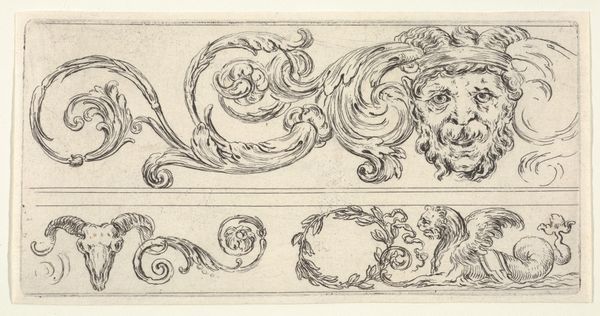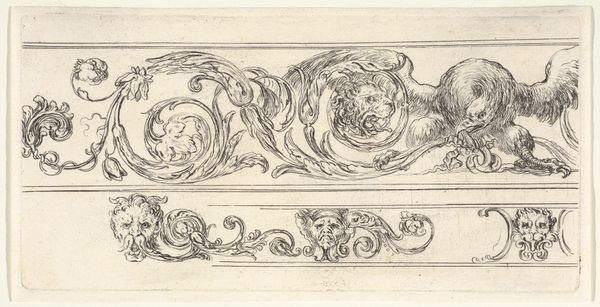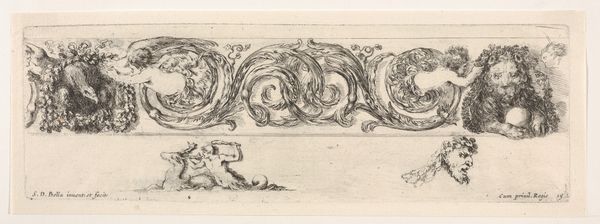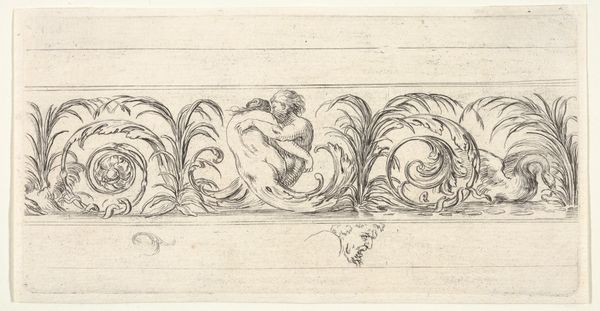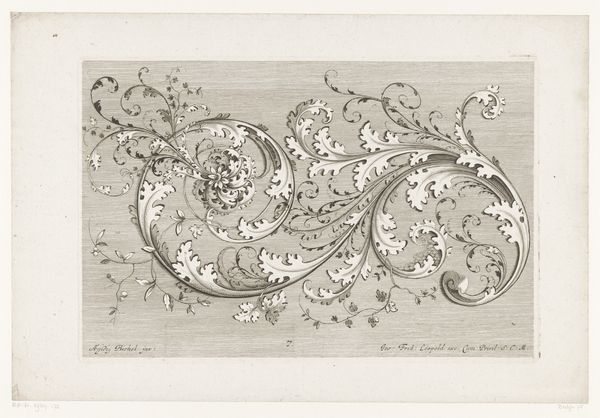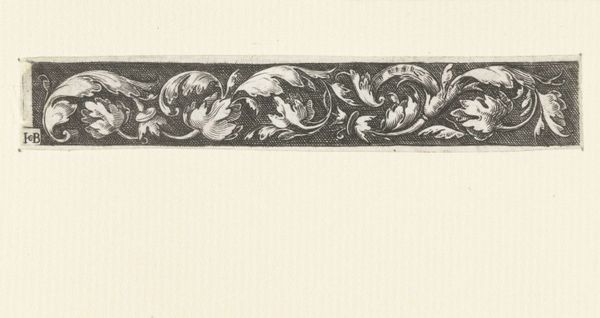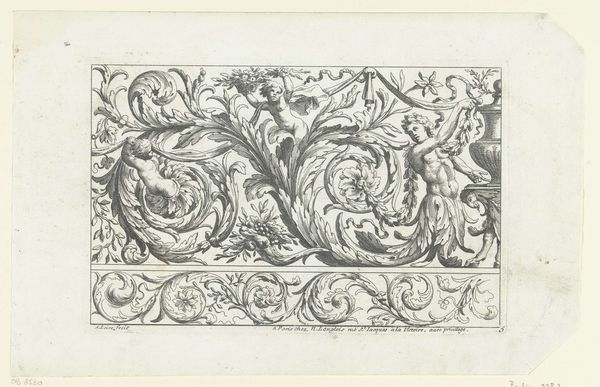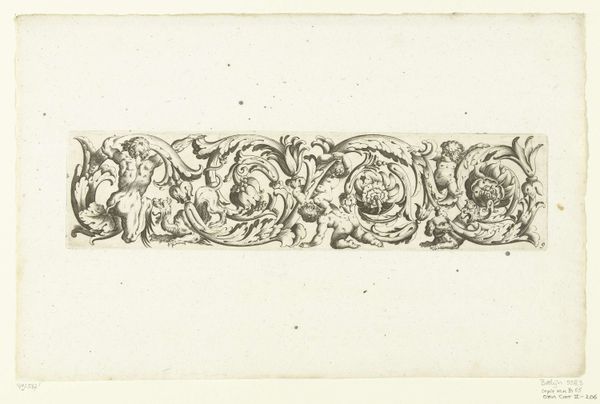
Plate 5: two friezes; at top, a grotesque head of an old man to left, a lion head to right, at bottom, a ram skull to left, a grotesque head of a man to right, from 'Friezes, foliage, and grotesques' (Frises, feuillages et grotesques) 1638 - 1643
0:00
0:00
drawing, ornament, print, engraving
#
portrait
#
drawing
#
ornament
#
baroque
#
pen drawing
#
head
# print
#
pen illustration
#
pen sketch
#
figuration
#
ink line art
#
linework heavy
#
ink drawing experimentation
#
pen-ink sketch
#
thin linework
#
men
#
line
#
pen work
#
sketchbook drawing
#
engraving
Dimensions: Sheet: 2 9/16 × 4 7/8 in. (6.5 × 12.4 cm)
Copyright: Public Domain
Curator: What a captivating print! This is “Plate 5: two friezes; at top, a grotesque head of an old man to left, a lion head to right, at bottom, a ram skull to left, a grotesque head of a man to right, from 'Friezes, foliage, and grotesques' (Frises, feuillages et grotesques)” by Stefano della Bella, created between 1638 and 1643. It resides here at the Metropolitan Museum of Art. Editor: Friezes usually don’t whisper to me, but this one’s got a real personality. There's a slightly dark, humorous quality that peeks out from behind the rigid composition, don't you think? Curator: Indeed. Della Bella was a master of the ornamental print, hugely popular during the Baroque period. These weren't just decorative; they were pattern books for craftsmen, architects, and designers to incorporate these motifs into larger works. The grotesque heads mixed with classical foliage--it's that Baroque love of the dramatic and theatrical. Editor: The faces have this incredible vulnerability; it’s quite surprising given the era's emphasis on grandiose expression. The etching style feels incredibly modern. It looks like quick, decisive marks captured from a dream...a slightly anxious dream, perhaps. Curator: I agree about that perceived vulnerability, perhaps owing to the tradition within which Della Bella was working. Ornament prints played a vital role in disseminating artistic ideas and styles across Europe. These prints were, in essence, the "Instagram" of their time. They served as a form of visual communication, enabling artists to engage in dialogue, and the dissemination of art was of critical importance during the seventeenth century because it facilitated artistic exchanges across vast distances and regions. Editor: So, Stefano’s sharing secrets then! The lion head, in particular, feels far more resigned than regal! Knowing they were intended as patterns almost enhances their odd, repurposed quality. What a playful way to instruct. Curator: Precisely! And that's part of what makes these pieces so interesting today. They're functional objects elevated to art objects because we're no longer using them for their original intended use. Della Bella captured the aesthetic pulse of the Baroque era and translated it into a series of enduring visual statements. Editor: It really is strange, that something designed to be a small detail for a bigger project could carry such evocative weight on its own. I keep seeing something new with each pass.
Comments
No comments
Be the first to comment and join the conversation on the ultimate creative platform.
